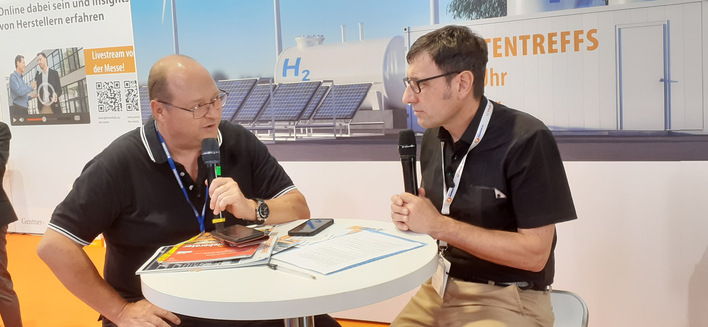Sometimes we plan our cover stories well in advance. And sometimes they simply find us – as was the case this time. Races featuring fuel cells and hydrogen engines are intended to accelerate technical development while also making the topic more appealing – and they have become increasingly common this summer and autumn. When a major organization like the Fédération Internationale de l’Automobile, or FIA for short, gets involved, it provides momentum. Attention, funding and the ambition of high-level development teams are then directed toward hydrogen technology. Formula Student Austria, on the other hand, sees itself primarily as a design competition for young engineers. For the first time, two hydrogen-powered vehicles competed there. And in the German city of Chemnitz, young people raced model cars against each other at the Hydrogen Grand Prix. The fuel cell makes it possible to use electric motors with their high torque without having to deal with the limitations of battery capacity. There is no doubt that a lot will happen in this area over the next few years.
But motorsport alone will not bring the technology to a breakthrough. The battery sector is not standing still – its range and performance are steadily increasing. Automotive suppliers, stack manufacturers and vehicle producers are making it very clear: they no longer want to bet on fuel cells in passenger cars, and even in the case of smaller commercial vehicles, they are being very cautious.
Fuel cells certainly have several advantages: fast refueling, independence from overloaded power grids, longer ranges – for now. But those who become too focused on “their” technology and its benefits can easily overlook innovations from competitors. In the late 2000s, providers of solar thermal power plants were very confident that photovoltaics would never catch up with them in terms of cost and storage capability. They laughed at suggestions about the steep learning curve of the competing technology – until it won the race.
Even today, new solar thermal power plants are still being built. And yes, storage capability is one of the arguments in their favor. They did not become the number one technology for solar power generation – but they found a niche in which they can play to their strengths.
Where can the fuel cell demonstrate what it is capable of? Some manufacturers are now looking for new applications: high power and long distances in the automotive sector, container-based power supply solutions, backup systems. In recent years, there has been significant progress in scaling both the systems and the factories. And in view of the growing hunger for energy and the increasing importance of resilience and security, one or more broader applications are likely to emerge.







